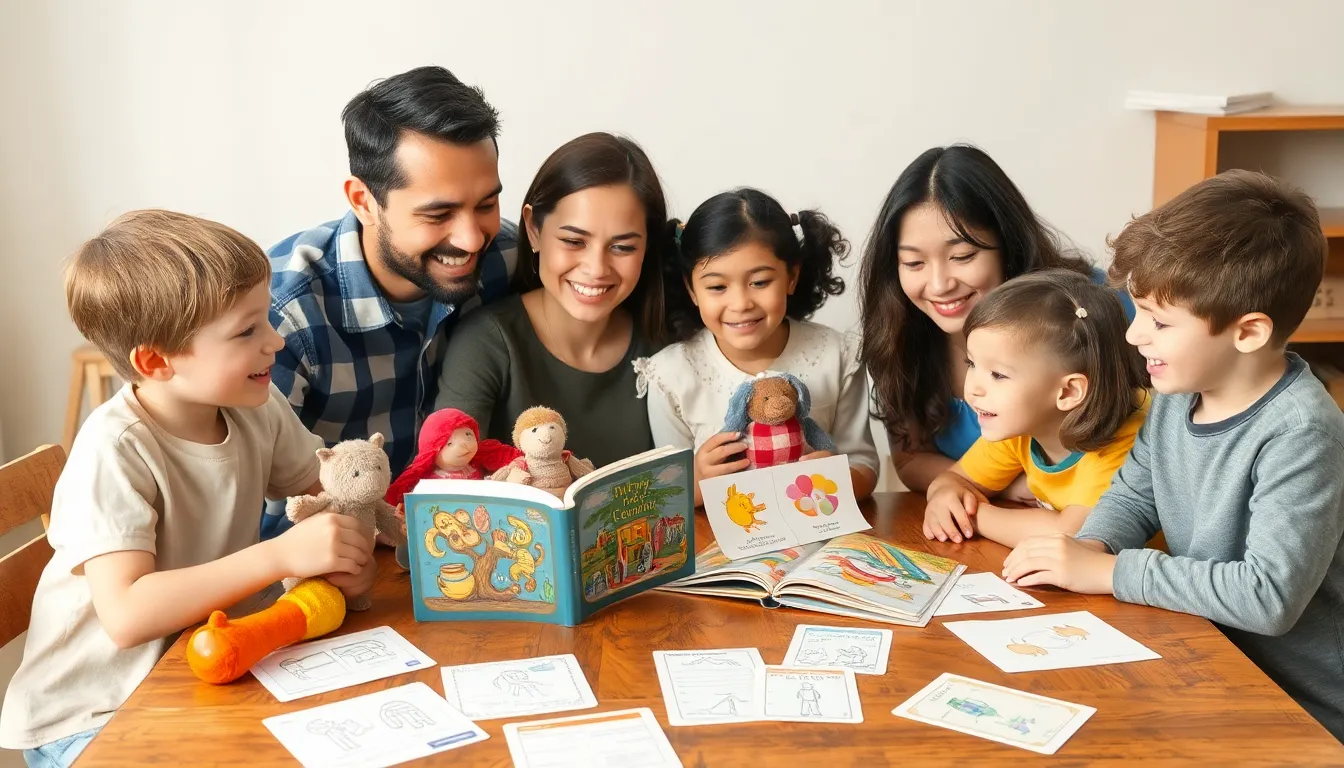Table of Contents
ToggleIn a world bursting with languages, families have a golden opportunity to embark on an unforgettable adventure together. Language exploration isn’t just about mastering vocabulary; it’s about unlocking new cultures, sparking curiosity, and maybe even impressing the neighbors with a few well-placed phrases. Imagine the joy of bonding over quirky idioms or laughing at the funny sounds that make up different tongues.
Diving into the world of language can transform family time into a delightful quest. It’s like a treasure hunt where the prize is not gold but a richer understanding of the world. So grab your metaphorical compass and join the fun—who knows, you might just find that learning a new language is the secret ingredient to a closer, more connected family.
Understanding Language Exploration for Families
Language exploration enriches family experiences by offering cultural insights and opportunities for bonding. Engaging with multiple languages fosters curiosity and deepens understanding of the world.
Definition and Importance
Language exploration involves discovering new languages and the cultures they represent. It represents a journey that enhances communication skills while promoting empathy and awareness. Families benefit from recognizing that languages carry unique perspectives, values, and traditions. Understanding different languages broadens worldviews, encouraging more inclusive attitudes as families navigate various cultural landscapes.
Benefits for Children and Parents
Children gain crucial cognitive skills through language exploration. They develop enhanced problem-solving abilities and improved multitasking. Language exploration also boosts creativity as children learn to express ideas in diverse ways. Parents experience increased family bonding during shared learning experiences. Together, families create memories and strengthen relationships. Engaging with new languages can enrich family discussions, allowing for deeper conversations about culture and identity. Overall, the benefits extend across multiple dimensions, enriching both individual and family growth.
Activities for Language Exploration

Engaging in activities for language exploration fosters communication and cultural appreciation within families. Three effective methods include storytelling techniques, interactive games, and family communication strategies.
Storytelling Techniques
Crafting stories together can enhance language skills significantly. Incorporating props and visuals brings narratives to life. Using different genres, such as fables and myths, adds depth and cultural context. Encourage family members to share personal stories from their backgrounds, fostering connection. Creating a story journal encourages reflection and enhances vocabulary. Using diverse languages within the stories builds familiarity and curiosity about new cultures.
Interactive Games
Playing language-focused games creates an enjoyable learning environment. Board games that involve word formation or storytelling encourage participation and a competitive spirit. Language apps often provide fun quizzes and challenges that reinforce learning. Memory games using vocabulary flashcards can strengthen retention. Incorporating songs and rhymes makes for lively engagement, inviting families to sing along. Utilizing scavenger hunts that require language skills promotes teamwork while exploring.
Family Communication Strategies
Regular conversations about daily experiences enhance language use. Establishing a language of the week encourages families to practice new vocabulary consistently. Engaging in themed dinner conversations based on a country or culture broadens understanding. Encouraging family discussions in different languages develops fluency and comfort. Sharing interesting facts about languages stimulates curiosity and prompts questions. Setting aside time for language-related activities, like movie nights with subtitles, deepens bonds and cultural appreciation.
Resources for Language Exploration
Families can enhance their language exploration journey using various resources. These tools provide wonderful opportunities for engagement and learning.
Books and Literature
Reading books in different languages offers immersive cultural insights. Families can explore bilingual books, which combine familiar and new languages, allowing for smoother transitions. Libraries often feature sections dedicated to multilingual literature, making it easier to discover. Classic tales retold in various languages can spark interest and promote discussions. Children benefit from hearing stories read aloud, reinforcing language patterns and vocabulary.
Online Platforms and Apps
Multiple online platforms and apps cater to diverse language learning needs. Duolingo provides interactive lessons across numerous languages, engaging users through gamification. Websites like BBC Languages offer resources for learners of all ages. Families can explore platforms that feature videos and podcasts in foreign languages, enhancing listening skills. Using language exchange apps like Tandem allows families to connect with native speakers, enriching their learning experience.
Encouraging Multilingualism
Embracing multilingualism enriches family dynamics and promotes personal growth. Families engaged in multiple languages foster a deeper understanding of diverse cultures.
Benefits of Being Multilingual
Cognitive abilities improve significantly through language exposure. Studies show that multilingual individuals often excel in problem-solving and critical thinking. Emotional intelligence also increases; understanding various languages enhances empathy towards others. Communication skills develop rapidly, allowing easier navigation in social situations. Children who learn multiple languages tend to perform better academically, demonstrating a clear link between language skills and overall learning outcomes. Additionally, competitive edges in the global job market emerge as multilingual individuals bring unique perspectives to workplaces.
Tips for Raising Multilingual Children
Integrating multiple languages into daily routines pays off. Reading bilingual books creates immersive experiences, enhancing comprehension. Engaging in conversations through varied mediums, such as music and apps, fosters enjoyable learning environments. Establishing routines where families speak different languages encourages fluency and practice. Traveling or connecting with native speakers through language exchange apps introduces authentic experiences. Incorporating cultural traditions from each language promotes deeper appreciation and personal connection. Consistency remains essential; setting aside time each week for language-focused activities enhances retention and engagement.
Language exploration opens doors to new cultures and strengthens family bonds. By engaging in this enriching journey families not only enhance communication skills but also cultivate empathy and understanding. The shared experiences of learning together foster deeper connections and create lasting memories.
Embracing multilingualism benefits everyone involved especially children who gain cognitive advantages and broaden their worldviews. With practical activities and resources at their fingertips families can easily embark on this adventure. The rewards of language exploration extend far beyond vocabulary; they lead to a more inclusive and enriched family life.







